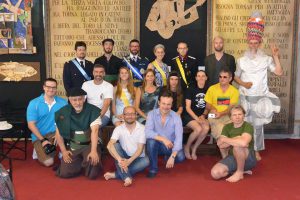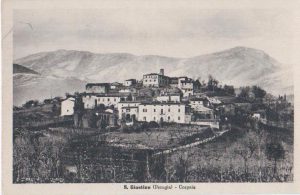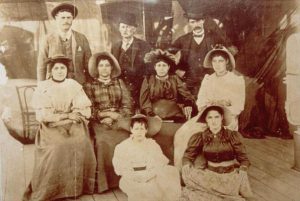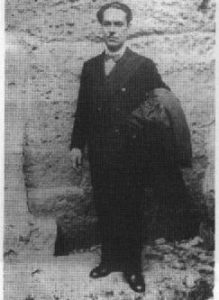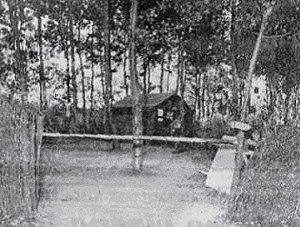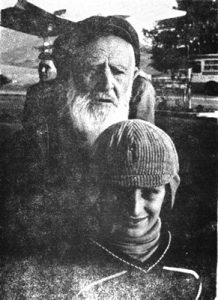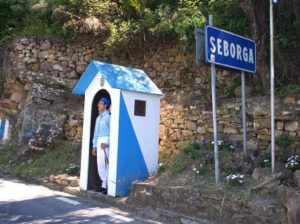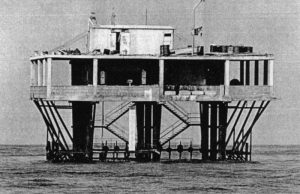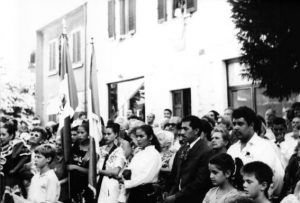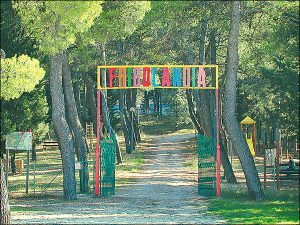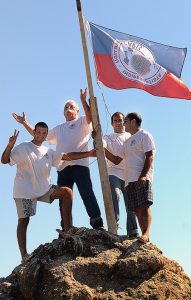
A Republic founded on Micronations – The Italian case
Simone Ciglia
Last year in Gubbio, in the locality of Santa Cristina, there was a summit of heads of State. The summit was only covered in a smattering of online articles by a few curious newspapers, and it garnered neither the flashes of photographers nor the interest of any television stations. In fact, the fourteen conference invitees don’t hold any seats at the United Nations and the States they represent do not appear on any political world map. The names of the States are inventive: the Principality of Aigues-Mortes, the Free Republic of Alcatraz, the Empire of Angyalistan, the Empire of Atlantium, the Formori Institute, the Grand Duchy of Flandrensis, the Kingdom of Kaprika, the Royal Republic of Ladonia, Bunte Republik Neustadt, Noseland, Republic of Benny André Lund, the Federal Republic of Saint Charlie, Neo-republic of Torriglia, the Republic of Užupis. The assembly took place in one of these territories, the Free Republic of Alcatraz: the setting for the third International Conference of Micronations [Fig. 1].
The word micronation (or, less frequently, micro-nation)[1] is today used as an all-encompassing term to classify a vast range of phenomena that were previously variously described as “model nations”, “imaginary States” and “counternations”. The use of the term micronation[2] became more widespread in the 1960s, being used to define entities that simulated, to varying degrees, States or independent nations. Despite their characteristic ambiguity, all micronations appear to share two essential features: a limited amount of territory and a lack of recognition from the international community. It is due to these peculiarities that micronations are distinct from microstates, which are both sovereign and internationally recognised (examples are Vatican City, the Principality of Monaco and Lichtenstein). Micronations also have to be distinguished from other types of social organisation that lack the structure of a State and claims of sovereignty – such as eco-villages, tribes, clans, sects, and various other kinds of communities. Additionally, the term micronation does not apply to nations that aren’t internationally recognised (such as Palestine) or secessionist, with a government in exile and a self-determining population[3].
After the expression micronation was coined, it was used retroactively to describe earlier instances of the concept. If the first examples of micronations can be traced back into the nineteenth century, then by the 1960s and 70s there was already a considerable number of them in the Western world, a reflection of the libertarian ideals of the era. The period from the mid-nineties to the present day witnessed a new and more aggressive growth in the number of micronations, as the Internet allowed them to proliferate into a virtual space. This recent revival needs to be read within the context of a wider global geopolitical system, which in the last decade of the twentieth century saw the birth of the greatest number of States known in history. Globalisation, the technological revolution and, more recently, the refugee crisis and international terrorism are amongst the forces that have helped to radically reshape the concept of a nation-State.
The process by which micronations imitate sovereign States involves the essential constitutive elements of a State – land, people and government – as well as many of its main characteristics: being based on a constitution, coining money, issuing various types of certification (primarily passports), being symbolically represented by a flag and a national anthem, issuing stamps and granting awards (such as titles or medals). Given the lack of legislation governing the international community’s recognition of States, which is based on customary law, micronations often assert their legitimacy by appealing to the Montevideo Convention on the Rights and Duties of States, which was signed in 1933 as part of the Seventh International Conference of American States. The first article of the Convention sets out the criteria for Statehood: a permanent population, a defined territory, a government and the capacity to enter into relations with other States (Lamunière, 2009, p. 126). The Convention goes on to say that fulfilling the criteria for Statehood is independent of recognition by other nations – an appeal to the declarative theory of Statehood, in which the fulfilment of the above four criteria is the definition of a State[4].
The majority of micronations meet the requirements of the Montevideo Convention in full or in part, even if the parameters vary enormously. For example, the orders of magnitude of micronations’ populations tend to be rather modest: amongst the smallest examples are those which consist only of their founder (as in the Kingdom of Talossa, created by thirteen-year-old Robert Ben Madison in 1979) or of a single household (for example, the Principality of Sealand, one of the oldest micronations still in existence, founded in 1967). The notion of a defined territory is also extremely variable: it can range from a very small area, such as a room within an apartment (again the Kingdom of Talossa, or that of Bannesled) to provinces dispersed across the globe (like the State of Sabotage, founded in 2003). However, it is not just the physical world that plays host to the territories of micronations; they can also extend into the mental (like the conceptual nations of Nutopia and the Evrugo Mental State), they can be without territory (the Republic of Anodyne and others) or they can combine different types of spaces (such as the physical, mental and digital combination of the Kingdom of Elgaland-Vargaland). Equally diverse are the forms of government adopted by micronations: from variations on a monarchy to new concepts such as remonia (i.e. Republican Monarchy, characteristic of Ladonia). With regards to the capacity to enter into relations with other States, there is some positive evidence, amongst the most famous the dispute between Ladonia and Sweden. The need to obtain recognition of their claims has also led some micronations to put in place various forms of supportive associations[5].
A diverse range of personalities are to be found amongst the founders of micronations – eccentrics, artists, con artists – and this reflects equally disparate motivations. This plurality has led to a classification of different types of micronation:
- Social, economic, or political simulations.
- Historical simulations.
- Exercises in personal entertainment or self-aggrandisement.
- Exercises in fantasy or creative fiction.
- Instruments for the promotion of an agenda.
- Entities created for fraudulent purposes.
- Historical anomalies and aspirant States.
- Exercises in historical revisionism.
- New-country projects[6].
Occupying an ambiguous territory lying on the border between fiction and reality, micronations radically call the status quo into question – politically, socially, economically and culturally. The number of micronations is constantly growing, and a significant portion of the new nations have found their homes on the Italian peninsula[7].
Italian Republics. Historical antecedents
One of the oldest and most enduring historic events that anticipated the phenomenon of micronations took place on the Italian peninsula. For almost four hundred years, the Republic of Cospaia ruled a territory of just over three kilometres squared, an area which is today a hamlet in the municipality of San Giustino (Perugia) [Fig. 2]. The Republic was founded in 1441 thanks to an error resulting from the diplomatic games between two of the superpowers of the time, the Papal States and the Florentine Republic. In exchange for a loan, Pope Eugene IV ceded the territory of Borgo Sansepolcro to the Medici. However, in the act of redrawing the borders between the States, the existence of two rivers of the same name a few kilometres apart meant that the borders were drawn incorrectly. As a result, the land in between the two bodies of water was a no man’s land; it proclaimed itself an independent State and, 43 years later, was recognised as such. Under the maxim Perpetua et firma libertas, the Republic of Cospaia prospered as free zone where there were no duties or taxes. In the seventeenth century, the population numbered about 400 and one of its principal productive activities was the cultivation of tobacco. However, Cospaia’s unusual statute was precisely the reason for its eventual decline: a refuge for smugglers, it lost its autonomy under Napoleon, and then definitively came to an end in 1826 when it was annexed by the Papal States.
Three years later, a new micronation came into being. Arguably a particularly fertile ground for such a story, it was on Sardinia that the Kingdom of Tavolara was established. The epic tale of the founding of this micronation started with an eccentric king-shepherd and smuggler, Giuseppe Bertoleoni. In 1829, he took possession of an island in the Gulf of Olbia and moved his family to there, sowing the seeds of a legend that made its all the way to Carlo Alberto, Duke of Savoy and King of Sardinia. On a date about which historians have yet to agree, the King visited the island, famous for its goats with golden teeth, and offered Bertoleoni a concession on the land. Using this event as leverage, it was primarily Bertoleoni’s son Paolo who led the fight for independence. The disappearance of corroborating documents has compromised any attempts to reconstruct the historical truth of this account, and thereby cloaked the kingdom in legend. After Paolo’s death, the island was briefly a republic before the dynasty was restored by Paolo’s successor, Carlo [Fig. 3]. However, the turn of the century marked the beginning of an unstoppable degradation of the kingdom’s territory; new modes of transportation and forms of communication also meant that the island became less isolated. The final blow came from NATO, who occupied half the island for use as one of its bases. Nonetheless, the story of the Kingdom of Tavolara endures, as the last representative of the dynasty is still on the island – working as a restaurateur.
New revivals: the late twentieth century
Historically, micronations came back to the fore in the late twentieth century. The climate of rebirth that characterised the post-war period was reflected in a landscape filled with new arrivals. Towards the end of the conflict, the incident of the Red Republic of Caulonia occurred: an event that lasted just four days – from 6 to 9 March 1945 – but in which the tensions of both that dramatic period of history and centuries of inequality were concentrated. At the centre of the matter was the agrarian issue, which was at the heart of the politics of Pasquale Cavallaro [Fig. 4], who had been mayor of the municipality of Caulonia (Reggio Calabria) for a year. An antifascist and a communist, Cavallaro launched a programme of reforms that culminated in a redistribution of land to the farmers. The day before the allocation of the land was scheduled to take place, his son was arrested, an event which lit a fuse that ignited a popular uprising against landowners and the police forces. The revolt was consumed by violence, rapes, and the murder of the parish priest. It was during these tumultuous days that the communist flag was raised in the town, a defiant proclamation of independence. However, the reaction was immediate: disowned by his own party, Cavallaro was accused and convicted of being the instigator of the murder. The story of the Red Republic, which for a few days prefigured the possibility of a new order, ended with him.
The following year, in a historical climate that was already drastically different, a new micronation was established; one that would last longer than the Red Republic, but which would nonetheless be marked by transience. In fact, this transient nature – or, more accurately, this seasonality – was a defining characteristic of the Tamisiana Republic of Bosgattia, whose motto was free, independent, periodic, transient, illiterate. The Republic existed only in the summer, from 1946 until 1955. During this period, its founder Luigi Salvini, a professor of Slavic Studies, brought together a group of friends and local residents on an island in the Po delta [Fig. 5]. Life in his little republic was in tune with the rhythms of nature, far away from the obligations of day to day life (neither wives nor children were admitted to the island) and isolated (all devices for communication were banned); hunting and fishing were the community’s main activities. However, like all self-respecting micronations, even the Tamisiana Republic of Bosgattia coined money (the “çievaloro”) [Fig. 6] and issued stamps and passports, all of which were handmade: they are now the only remaining evidence of this adventure in the world of micronations, which ended with Salvini’s illness and death.
Whilst the quiet summers of the Tamisiana Republic passed by, a much more turbulent story was unfolding in the south of the peninsula. The setting for this particular story was a sliver of land, no larger than four thousand metres squared, next to the Basentana Road, a junction in Grassano (Matera): the Republic of Piani Sottani, founded by Michele Mulieri [Fig. 7]. Mulieri was memorably portrayed in writer-politician Rocco Scotellaro’s book Contadini del Sud, as well as by journalists from numerous newspapers, who were all intrigued by his character. Dissatisfied with the «restrictiveness» and «closed mindedness» of small-town life, Mulieri travelled around Italy and Africa, living a life of adventure until he became unable to work and decided to return to his birthplace. His vicissitudes often led him into «the impossible and contradictory labyrinth of bureaucracy»: he clashed with various forms of authority, including a carabineiri marshal at the Istituto degli Infortuni (an Italian government agency for insurance against work-related injuries) who reduced his disability pension. He was also arrested more than once for contempt towards a public official. His circumnavigation of bureaucracy reached a climax when he attempted to execute his most ambition business plan yet: with the goal of securing a future for his large family, in 1950 Mulieri applied himself to establishing a roadside refreshment stand in Piani Sottani. Over the years, the obstacles placed in his path by Agip, ANAS, Eni, the Italian government, the police and the prefecture pushed him into a declaration of independence, which he summarised in an ill-written sign: «Negligent, depraved and bastard Italians / I in my person deny all calls / and I declare myself an absolute Republic». History has proved his cause: he was able to expand his business with a tobacconist, a restaurant and telephone line. His most memorable undertaking, however, remains the founding of his own State that, between the jokes and the bravado, fought a battle against all forms of authority.
If the «poisonous flower» of bureaucracy represented one of the main enemies of the Republic of Piani Sottani, it was more or less an ally of the Principality of Seborga [Fig. 8]. This Ligurian enclave, fourteen square kilometres in size, claims it has been independent since 954, due to the fact its sale in 1729 was never registered by its new owners, the House of Savoy; according to the agreement the area should have been a personal asset of the king, which would result in an absence of sovereignty. On this basis, in 1963 the Principality proclaimed its ‘re-founding’ and elected Giorgio I (born Giorgio Carbone) as its sovereign. It is to his name that the struggle for independence, which passed through the court of San Remo and the Constitutional Court of Italy, is tied. The king died in 2009 and, following an election, he was succeeded by Marcello Menegatto, who assumed the title Marcello I. Numismatics and philately represent two of the major sources of revenue for the “Free and Sovereign Principality, governed by democratic norms”, which boasts representation abroad and which continues its bloodless struggle for autonomy to this day.
The life of what is, in all likelihood, the most famous micronation on Italian soil, a source of inspiration for cinema and literature, was much more short-lived. The Republic of Rose Island, founded on 1 May 1968, lasted just fifty-five days and was subsequently dismantled. Yet another island – this time an artificial one – it was a four hundred metre square platform 11.6 km off the cost of Rimini, in international waters. It was constructed by Bolognese engineer Giorgio Rosa, who had been planning it since 1956. Like several of his predecessors, he was motivated by an opposition to the elephantine Italian bureaucracy and the plethora of powers that he claimed determined the fate of the country: the Americans, the Church, the communists. The project was patented as a «system to construct islands using steel and reinforced concrete for industrial and civil purposes», for which a dedicated company was founded. After conducting the first surveys on his own in 1960 and experiencing a brief setback, Rosa involved other professionals in his work. Finally, the project became operational: construction work started in 1964 and finished two years later [Fig. 9]. In 1967, the island was opened to the public; the year after that, the Esperanta Respubliko de la Insulo de la Rozoj announced its independence. The official language chosen for the new State was Esperanto. The intention of the Republic’s founding fathers was to create a tourist attraction and, to this end, a bar and a post office were set up on the island. In the meantime, the project had come to the attention of the Italian State, which quickly intervened: on 25 June, the carabinieri and the Italian financial police occupied the island. Rosa’s attempts to save his dream ultimately failed: after surviving two explosive charges, the structure sank following a storm on 26 February 1969, and with it went the utopia of the period.
Latest news from the world of micronations
After two decades of relative stasis, in the mid-nineties Italian micronations started to come back to life. Around that time, the spread of the Internet meant that micronations were starting to proliferate into a new, virtual space; however, Italy remained faithful to the earth, tying its endeavours firmly to the physical domain. Italian micronations were also notable due to their cultural origins: literature, theatre and satire, perhaps sensing their gradual marginalisation, seemed to look for new spaces to call their own, eventually reaching the hyperbole of actually creating their own States.
The first example of this arguably resulted from a short-circuit in the media. In 1996, the Lega Nord were campaigning for the secession of Padania; in Maresca, a small town in Pistoia, questions were being asked about the borders of the new State. Secondo Calibano recalls: «In those days we found ourselves in a strange situation. […] The boundaries suggested by the Lega Nord passed through here. In fear, we began to ask ourselves: where will they put us, given that we are so small? With Padania or with what remains of Italy? In this situation of uncertainty, we decided to pre-empt the decision and, proud of our Etruscan origins – that have as little to share with Rome as with Padania – apply for recognition as an independent State at the United Nations» (Graziani, 2015, p. 248) [Fig. 10]. The self-proclaimed Free Territory of Mapsulon made anti-modernisation the cornerstone of its philosophy: international telephone calls were suspended (the only exceptions being to some ex-Soviet republics, Brunei, Mongolia and the Solomon Islands), television and vehicular traffic were banned. As well as ecological motivations, the experiment also had literary roots. Calibano was, in fact, a participant in the Luther Blisset project, a pseudonym for a collective that in 1994 carried out a series of actions that aimed to disrupt communications mechanisms and dedicate itself to the production of literary works. Mapsulon has its own newspaper – L’Eco di Mapsulon (“periodic communication with the rest of the world”) – and its own publisher, Société éditoriale mapsulonnaise.
Ten years later, an Italian cult magazine decided to continue its revolution by becoming a republic. Active since 1980, Frigidarie was a bastion of satire that boasted names such as Andrea Pazienza, Filippo Scozzari and Stefano Tamburini amongst its collaborators. After the loss of the its Rome headquarters, founder Vincenzo Sparagna accepted an offer from the municipality of Giano dell’Umbria (Perugia), who provided him with the use of a disused fascist summer camp. It was there in 2006 that the Republic of Frigolandia was born (http://www.frigolandia.eu). The complex of cultural references that feed into life in Frigolandia can be seen in the various ways it has been described: Fantasy Republic, Academy of Inventions, Socratic Ashram, Imaginary City of Arte Maivista, Peace and Poetry Park, Eurotibetan Monastery, First Maritime Mountain Republic. Founded on fantasy, the Republic rejects its definition as a State or nation, saying that it is constitutionally «in permanent movement towards overcoming all borders, a move towards elsewhere, a global network of nomadic subjects[8]». Frigolandia includes a park [Fig. 11], Jack London’s Hut – a hut inspired by that of the writer, which was demolished – the Nature Theatre of Oklahoma, two houses and a main building that houses the MAM, Museum/Laboratory of Arte Maivista, which collects materials relating to the glorious history of the magazine and its continuing ideals.
The pleasant landscape of Umbria has also given rise to another, more recently established micronation. A few kilometres away from Frigolandia, near Gubbio, is the Free Republic of Alcatraz (http://www.repubblicadialcatraz.com). The State, which describes itself as based on poetry, evolved from a cultural centre established by Jacopo Fo in 1981. Berlusconi’s electoral success in 2008 was the main driver for its declaring independence the following year. Various forms of art are nurtured in Alcatraz – such as theatre, yoga and Tai Chi – and there is a focus on practicing a sustainable lifestyle [Fig. 12].
At around the same time that Alcatraz was established, Sardinia reclaimed its place at the centre of the world of micronations in an episode that grabbed the headlines. Once again, it was an island – this time Val di Ventre (Malu Entu in Sardinian) – upon which the flag of a new republic was hoisted. The island, which sits within a marine protected area, is officially owned by a Neopolitan company. On 26 August 2008 it was occupied by a group of six militants from the group Partidu sardu pro s’indipendentzia, led by its founder Salvatore Meloni. For five months, they ran Repubrica Indipendenti de Malu Entu, in the name of ecological ideals [Fig. 13]. During those five months, Malu Entu saw an initial attempt at evicting the militants, a petition from the WWF, an invasion by neofascists, and one of the militants suffering a stroke; the group finally capitulated on 30 January 2009 when they were evicted by forest rangers and the Harbour Master. The judicial proceedings ended with an acquittal at the Court of Appeal in 2016.
Notes
[1] For an introduction to micronations, please see: Strauss, 1979; Fuligni, 1997; O’Driscoll, 2000; Ryan, Dunfort, Sellars, 2006; Bertin-Hoffmann, 2010; Graziani, 2012; Graziani, 2015. The exhibition catalogues: Kochta O., Kalleinen T., 2003; Kochta-Kalleinen O., 2005; Lamunière, 2009. There is a wealth of information on the Internet, of which we can only give a brief sample in this discussion. [2] The term first appeared in 1940 in French (in Bibliothèque historique vaudoise, Volume 67, of the Société historique vaudoise, Société académique vaudoise). The earliest evidence of its use in the English language is from three years later, in The battle for Buenos Aires, by Saxtone E. Bradford (Harcourt, Brace and Company, New York, p. 95). However, the term’s first appearance in a book with a wide distribution is in the 1978 edition of The People’s Almanac #2, edited by David Wallechinsky and Irving Wallace (Doubleday, p. 330). A few years earlier, the variant micro-nation appeared (A micro-nation, in “The Age”, 26 October 1967, p. 5). The first example of its use in journalism is from an article in “Time” (8 October 1973): TOURISM: Red into Black. Other terms used to describe the same phenomenon are: cybernation, phantasy country, model country or nation, new country project, pseudonation, counternation, ephemeral State, online nation. [3] A proposed definition of a micronation was put forward in an online essay by Peter Ravn Rasmussen, who designated it as: “[…] A micronation is an entity created and maintained as if it were a nation and/or a State, and generally carrying with it some, most or all of the attributes of nationhood, and likewise generally carrying with it some of the attributes of Statehood. Though a micronation may well have begun as a mere drollery, it has the potential (given the evolution of a sufficiently vital national culture) to develop into a true nation, and possibly to achieve Statehood”. Rasmussen, 2001. For another definition of micronations, see: Chaudhary M. A., Chaudhary G., 2009, pp. 140-142. [4] An alternative to the declarative theory of Statehood is the constitutive theory of Statehood, in which recognition by the international communicaty is a necessary condition for Statehood. [5] One of the best-known and most active organisations is the League of Secessionist States (LoSS), founded in 1980 (Lamunière, 2009, p. 79). [6] This classification is taken, in large part, from the Wikipiedia entry Micronation http://en.wikipedia.org/wiki/Micronation (last accessed 9/10/2016). [7] For a census of micronations, the atlas for which is in constant movement, see the largest online encyclopedia dedicated to the subject: http://mw.micronation.org (last accessed 9/10/2016). [8] http://www.frigolandia.eu/?q=node/37 (last accessed 9/10/2016).
Bibliography
Casalino F., Mulieri M. (1982), La vera storia di Michele Mulieri, Galzerano, Casalvelino Scalo Cavallaro A. (2009), Operazione «armi ai partigiani». I segreti del Pci e la Repubblica di Caulonia, Rubbettino, Soveria Mannelli Chaudhary M. A., Chaudhary G. (2009), Global encyclopaedia of political geography, Global Vision Publishing House, New Delhi Fuligni B. (1997), L’Etat c’est moi. histoire des monarchies privées, principautés de fantaisie et autres républiques pirates, Les Éditions de Paris, Paris Geremia E. C., Ragnetti G. (2005), Tavolara. L’isola dei re, Mursia, Milano Graziani G. (2012), Stati d’eccezione. Cosa sono le micronazioni, Edizioni dell’asino, Roma Graziani G. (2015), Atlante delle micronazioni, Quodlibet, Macerata Kochta O., Kalleinen T., a cura di (2003), Micronations. Documents/Asiakirjoja, exhibition catalogue (Helsinki, 2003), with contributions from Mika Hannula, Susan Kelly, Tomas Träskman & Marita Muukkonen, Oliver Kochta, Anders Härm, Roi Vaara and the summit participants (Principality of Sealand, NSK-State, Kingdoms of Elgaland & Vargaland, Ladonia, Transnational Republic, State of Sabotage), MUU ry, Helsinki Kochta-Kalleinen O., edited by (2005), Summit of Micronations/Protocols, Taiteilijajärjestö Muu Ry/Artists’ Association MUU Lamunière S. edited by (2009), Utopics. Systems and Landmarks. 11th Swiss Sculpture Exhibition, exhibition catalogue (Bienne, 2009), JRP|Ringier Mihm S., Utopian Rulers, and Spoofs, Stake Out Territory Online, in “The New York Times”, 25 May 1999. Currently available at: http://www.nytimes.com/2000/05/25/technology/utopian-rulers-and-spoofs-stake-out-territory-online.html Misiani S. (1994), La Repubblica di Caulonia, Rubbettino, Soveria Mannelli O’Driscoll F. (2000), Ils ne siegènt pas a l’ONU. Revue de quelques micro-États, micro-nations et autres entités éphémères, Les Presses du Midi, Toulon Ottolenghi G. (2009), Seborga: ieri oggi domani, Casabianca, Sanremo Rasmussen P. R. (2001), What is micronationalism? An introduction. An essay on micronationalism, coverng the full breadth of the phenomenon, http://www.scholiast.org/nations/whatismicronationalism.html (last accessed 19/5/2016) Rosa G. (2009), L’isola delle rose, Persiani, Bologna Ryan J., Dunfort G., Sellars S. (2006), Micronations. The Lonely Planet Guide to Home-Made Nations, Lonely Planet Salvini L. (2007), Una tenda in riva al Po, Giunti, Milano Scotellaro R. (2009), L’uva puttanella; Contadini del Sud, Laterza, Roma Strauss E. S. (1979), How to start your own country, Paladin Press, Boulder


